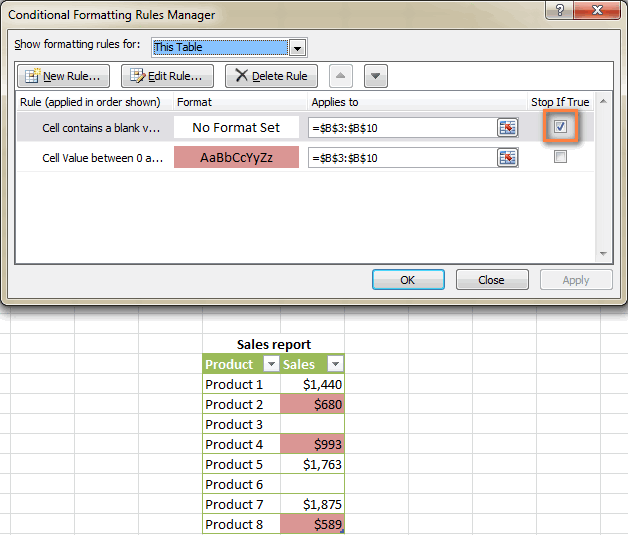

- #Conditional formatting excel 2016 on true false how to
- #Conditional formatting excel 2016 on true false full
If you can't get your conditional formatting rules to fire correctly, there's most likely a problem with your formula.

#Conditional formatting excel 2016 on true false how to
Video: How to build a search box to highlight data.Article: How to highlight rows that contain specific text.Article: How to highlight cells that contain specific text.
#Conditional formatting excel 2016 on true false full
Some of these examples can be created using Excel's built-in presets for highlighting cells, but custom formulas can go far beyond presets, as you can see below.įor more details and a full explanation, see:

Formula Examplesīelow are examples of custom formulas you can use to apply conditional formatting. If you struggle with this, see the section on Dummy Formulas below. Imagine that you entered the formula in the upper-left cell of the selection, and then copied the formula across the entire selection. the upper-left cell). The trick to understanding how conditional formatting formulas work is to visualize the same formula being applied to each cell in the selection, with cell references updated as usual. When conditional formatting is applied to a range of cells, enter cell references with respect to the first row and column in the selection (i.e. The above formulas all return TRUE or FALSE, so they work perfectly as a trigger for conditional formatting. Here's the result of the rule applied to the range B4:F8 in this spreadsheet: Formulas give you maximum power and flexibility.įor example, using the "Equal to" preset, it's easy to highlight cells equal to "apple".īut what if you want to highlight cells equal to "apple" or "kiwi" or "lime"? Sure, you can create a rule for each value, but that's a lot of trouble. Instead, you can simply use one rule based on a formula with the OR function: By using your own formula, you take over the condition that triggers a rule and can apply exactly the logic you need. However, you can also create rules with your own custom formulas. With conditional formatting, you can do things like highlight dates in the next 30 days, flag data entry problems, highlight rows that contain top customers, show duplicates, and more.Įxcel ships with a large number of "presets" that make it easy to create new rules without formulas. Quick Start | Examples | Troubleshooting | TrainingĬonditional formatting is a fantastic way to quickly visualize data in a spreadsheet.


 0 kommentar(er)
0 kommentar(er)
